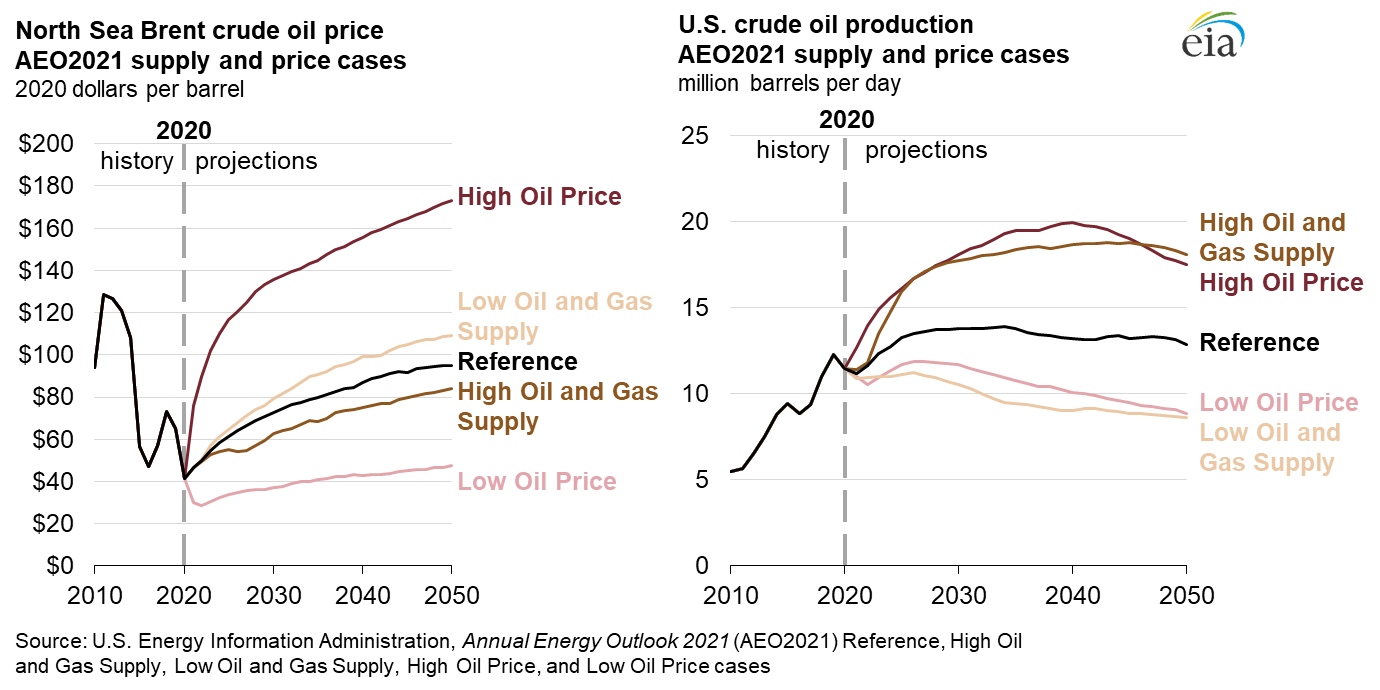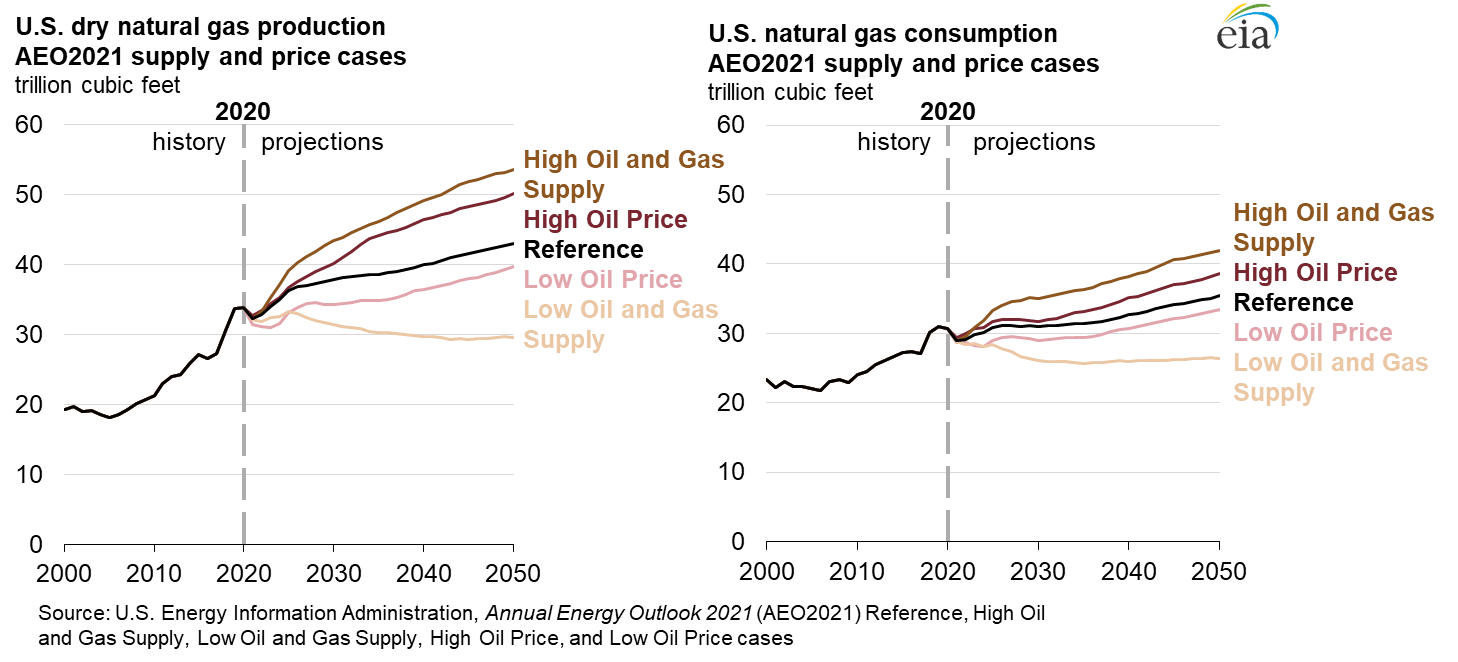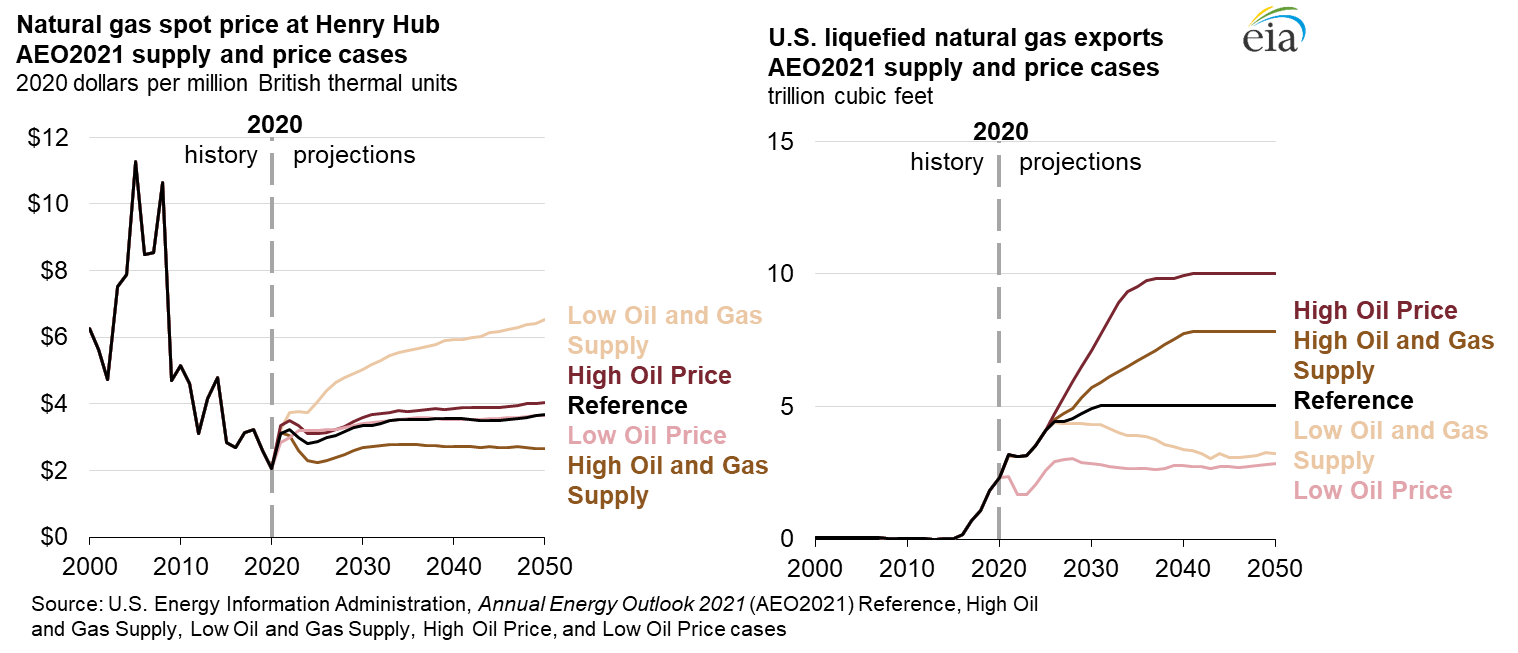
- Key takeaways from the Reference case and side cases
- The Annual Energy Outlook 2022 explores long-term energy trends in the United States
- What is the AEO2022 Reference case?
- What are the side cases?
- Motor gasoline remains the most prevalent transportation fuel despite electric vehicles gaining market share
- Energy-related carbon dioxide (CO2) emissions dip through 2035 before climbing later in the projection years
- Energy consumption increases through 2050 as population and economic growth outweighs efficiency gains
- Electricity continues to be the fastest-growing energy source in buildings, with renewables and natural gas providing most of the incremental electricity supply
- Electricity demand grows slowly across the projection period, which increases competition among fuels
- Renewable electricity generation increases more rapidly than overall electricity demand through 2050
- Battery storage complements growth in renewables generation and reduces natural gas-fired and oil-fired generation during peak hours
- As coal and nuclear generating capacity retire, new capacity additions come largely from wind and solar technologies
- U.S. production of natural gas and petroleum and other liquids rises amid growing demand for exports and industrial uses
- Driven by rising prices, U.S. crude oil production in the Reference case returns to pre-pandemic levels in 2023 and stabilizes over the long term
- Refinery closures lower domestic crude oil distillation operating capacity, but refinery utilization rates remain flat over the long term
- Consumption of renewable diesel increases as a share of the domestic fuel mix
Amid uncertainty, the United States continues to be an important global supplier of crude oil and natural gas
Oil price is the primary driver of drilling and production
For both liquid fuels and natural gas, the effects of COVID-19 are primarily a short-term demand-side shock. Uncertainty surrounding post-pandemic expectations for oil and natural gas demand translates to uncertainties in supply through prices.
In AEO2021, the oil price is the primary driver of projected drilling activity and accompanying U.S. crude oil production rates. Thus, given the current economic downturn, EIA expects a lower price path in the short and medium term to decrease U.S. oil production rates compared with AEO2020.
Producers are more dependent on capital from cash flow
The oil and natural gas industry was already headed toward relying on capital from cash flow instead of debt and equity. COVID-19 has accelerated this trend, leaving producers more dependent on internal sources of cash flow because outside funding sources are less available or require higher rates of return. AEO2021 reflects these trends, with model changes including reducing drilling responsiveness to price increases in the short term and increasing the hurdle rate of return. Oil prices remain the most significant determining factor in oil production, and so if oil prices rapidly rise, as is seen in the High Oil Price case scenario, then production would follow suit.

Reference case crude oil production remains at record-high levels for the next 30 years
Starting in 2023, oil and natural gas production in the Reference case remains at historically high levels through 2050. The United States continues to be an integral part of global oil and natural gas markets and a significant source of global supply.
Domestic crude oil production in the Reference case returns to 2019 levels starting in 2023. In the long term, production continues to grow, generally plateauing in the later years of the projection period. The Brent crude oil price returns to 2019 levels after 2025 in the Reference case. Where the prices return quickly to pre-COVID-19 levels, as they do in the High Oil Price case, then crude oil production returns to 2019 levels more quickly. However, in the Low Oil Price case where oil prices are much lower than recent historical levels seen during the past 10 years, production never returns to pre-pandemic levels.
Tight oil is primarily driving the growth in the oil production outlook, followed by offshore resources. Tight oil production from the Wolfcamp play in the Permian Basin (Southwest region) and the Bakken play in the Williston Basin (Northern Great Plains region) leads the growth in U.S. tight oil production. However, estimates of technically recoverable tight or shale crude oil and natural gas resources are uncertain. The high and low oil and gas supply cases explore the impact of higher and lower resource supply levels on domestic production, including tight oil.
Natural gas production continues to grow, and end-use consumption and liquefied natural gas (LNG) trade remains uncertain

Domestic natural gas production in the Reference case also returns to pre-pandemic levels starting in 2023. In the long term, production continues to grow during the entire projection period, driven by end-use consumption and opportunities to sell natural gas internationally through LNG exports.
Shale gas and associated natural gas from oil plays are the primary contributors to this long-term growth. In the Reference case, more than half of the growth in shale gas production between 2020 and 2050 comes from shale gas plays in the Appalachian Basin in the East region, and most of the remaining growth comes from plays in the Gulf Coast and Southwest regions. Due to the drop in crude oil production, associated natural gas (natural gas produced in primarily oil formations) also decreased in 2020 because of the relatively low crude oil and natural gas prices. EIA projects associated natural gas will return to 2019 levels in 2024 and then steadily increase at a modest rate through 2050, primarily driven by increased drilling in the Permian Basin.

In the long term, because of expected increases in international demand for natural gas, EIA expects U.S. LNG exports to more than double between 2020 and 2029 in the Reference case.
The side cases display the uncertainty in international demand for and competitiveness of U.S. supply. Oil prices, which are traditionally used as a basis for global LNG price contracts, and U.S. natural gas prices both drive how competitive U.S. LNG exports are in global markets. The Oil and Gas Supply cases define the range of projected U.S. natural gas supply prices in the AEO 2021. Henry Hub natural gas spot prices remain below $3 per million British thermal units (MMBtu) in the High Oil and Gas Supply case and exceed $6/MMBtu by 2050 in the Low Oil and Gas Supply case.
With higher oil prices or lower U.S. natural gas domestic prices, LNG exports are much higher than in the Reference case, while the opposite occurs with lower oil prices or higher U.S. natural gas domestic prices.
Domestic crude oil and natural gas production continues to grow in most cases, but the outlook is highly dependent on uncertain oil prices and level of technically recoverable U.S. resources.
-
Previous Editions of the AEO
-
Documentation and Assumptions